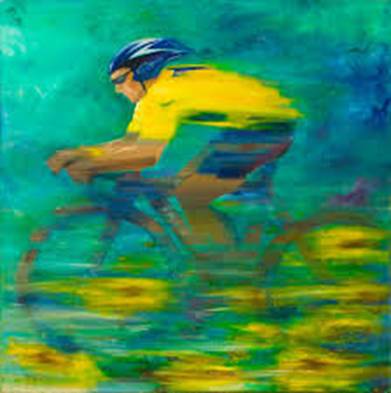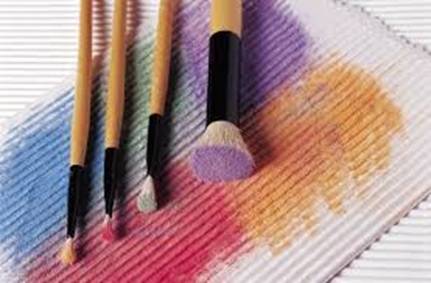|
Art and Sport: Two
Natural Healers
By Jennifer Colley
The
classification of people as ‘either arty or sporty’ begins quite early in
life, in our school years, yet it goes without saying that these pastimes
have plenty in common: both bring together
people from all walks of life, both serve as a relief from pent-up
frustration, fear and trauma. These are some of the many ways both art and
sport can bestow a healing effect.
- Art and sport can aid patient to deal with
serious diseases like cancer: Art
is used as therapy to deal with a number of conditions,
including the psychosocial effects of cancer, owing to its ability to
reduce the perception of pain, improve one’s body image and reduce
levels of stress hormone, cortisol. The same can be said of sport, which
has also been proven in various studies to lower cortisol levels and
improve our body image, especially as our fitness level and ability
improve.
- Art and sport battle depression: If you are interested in learning more
about the powerful effects that art has on the brain, we recommend the
book Arts with the Brain in
Mind, by Eric Jensen. The author notes that art enhances our
ability to “elicit and even mediate our emotional responses.” He adds
that art activates different areas of the brain and that once we find
something we can identify with in art we have created or in a work we
are viewing, we are moved to a state of greater positivity. Art battles
depression by showing us that we have a choice; that as we create, there
are a myriad of decisions we can make, neither of which is absolutely
right or wrong. What we produce is symbolic of the many paths we can
take in our pursuit of happiness. Sport is also a powerful way to battle
depression, since it teaches us the value of hoping and aiming for
success, and of trying out new strategies when the result of our efforts
has not been to our liking. Both art and sport teach us to accept our
shortcomings and find ways to improve, so we can continue to do
something which we love; something which is highly beneficial to our
physical and mental health. In many ways, both sports and art hold the key
to a positive life transformation.
- Art and sport can be used to help heal those
suffering from addiction and eating disorders: The ability of both art and sport to
counter the effects of stress has led them to be popular choices in
everything from rehabilitation centers for those recovering from drug
abuse, to centers for patients with Alzheimer’s disease and even
hospital units and centers for those suffering from eating disorders.
Since an addiction to exercise is a common
characteristic of those suffering from anorexia and other
eating disorders, it may seem counter-productive to encourage recovering
patients to take part in exercise. In fact, the opposite is true;
specific methods like yoga and Pilates, with their emphasis on mindfulness
and mind-body coordination, are gentle ways to increase the strength
lost through a poor nutritional intake. Moreover, these methods, which
are apt for all fitness levels and all ages, are an excellent introduction
into an authentic love for sport, with its focus on healthy competition.
To succeed at sports, moderation is key, both in our nutritional intake
and in the amount of exercise we do. An interest in doing the right
thing by our team or in shining in our individual sport encourages us to
lead a healthier lifestyle.
- Both art and sport boost our
self-confidence: One of
the most powerful effects of art therapy is its ability to make
us feel that we have accomplished something; sport is similar in its
emphasis on finishing (think of a challenging race like Ironman),
improving on past efforts and seeing our own progress in real,
measurable terms. Positive comments from family members and those who
make up our social circle also go a long way towards encouraging us to
continue with our chosen art form or sport.
- Art and sport battle fatigue: Studies have shown that not only does art
therapy lower stress levels; it also reduces fatigue. Both are actually
related, since when too much cortisol is produced, our ‘fight or flight’
response is invoked and we can find it difficult to make many positive
lifestyle choices, such as expanding our social circle, joining our
local community or commencing an exercise program. Since art
battles stress, it frees up our system to make rational choices that
lead to self-improvement. Exercise similarly battles tiredness. One
fascinating study showed that physical activity was able to
lower fatigue levels in patients recovering from breast cancer; this
is crucial, since tiredness and high stress levels are linked to poorer
outcomes for these patients.
- Both art and sport produce a natural high: If you are a passionate painter and
sculptor, then surely you recall having worked on a particular piece for
hours on end, throughout the night, impervious to hunger and sleep, to
the passing of time and to other obligations. This sensation of being
outside of time and space is incredibly similar to what keen athletes
call ‘being in The Zone’, when tiredness and pain disappear and the
athlete performs at their peak and begins to feel like nothing can hold
them back. It is a unique sensation and one that can additionally be
understood and experienced, by an artist.
table of contents
Eve’s Magazine
|

